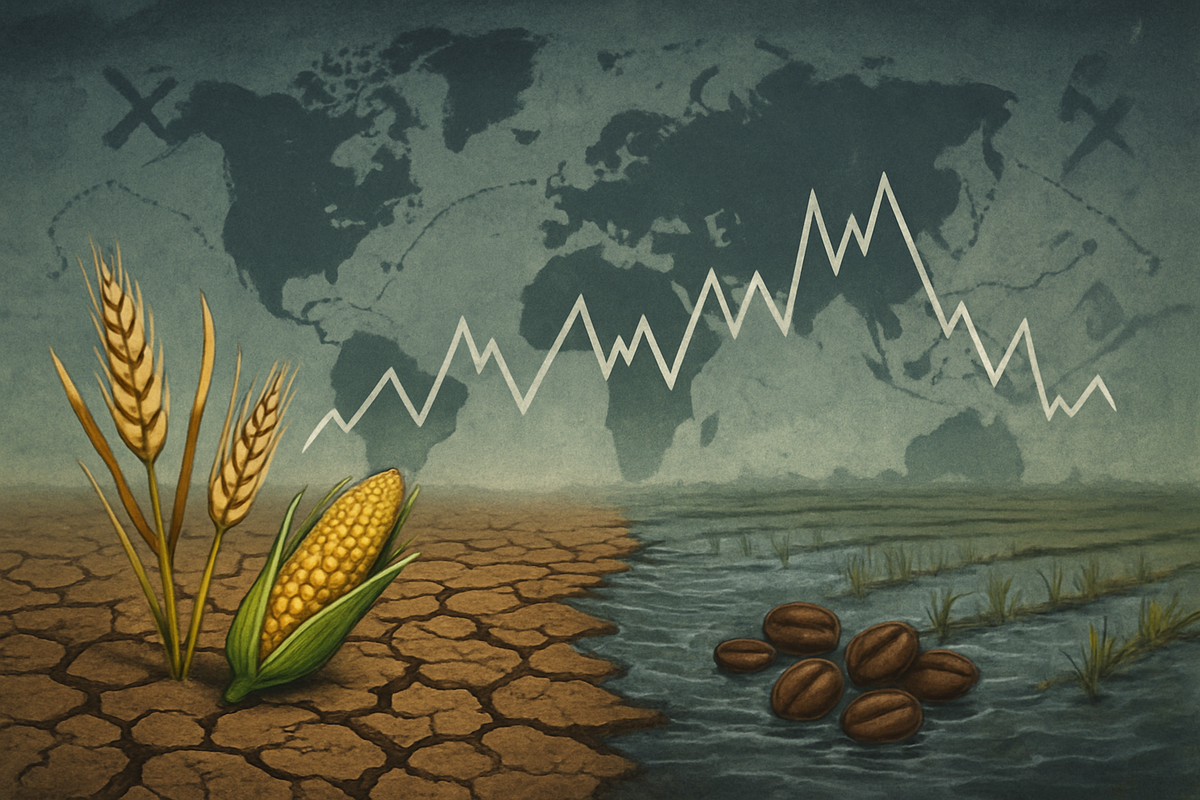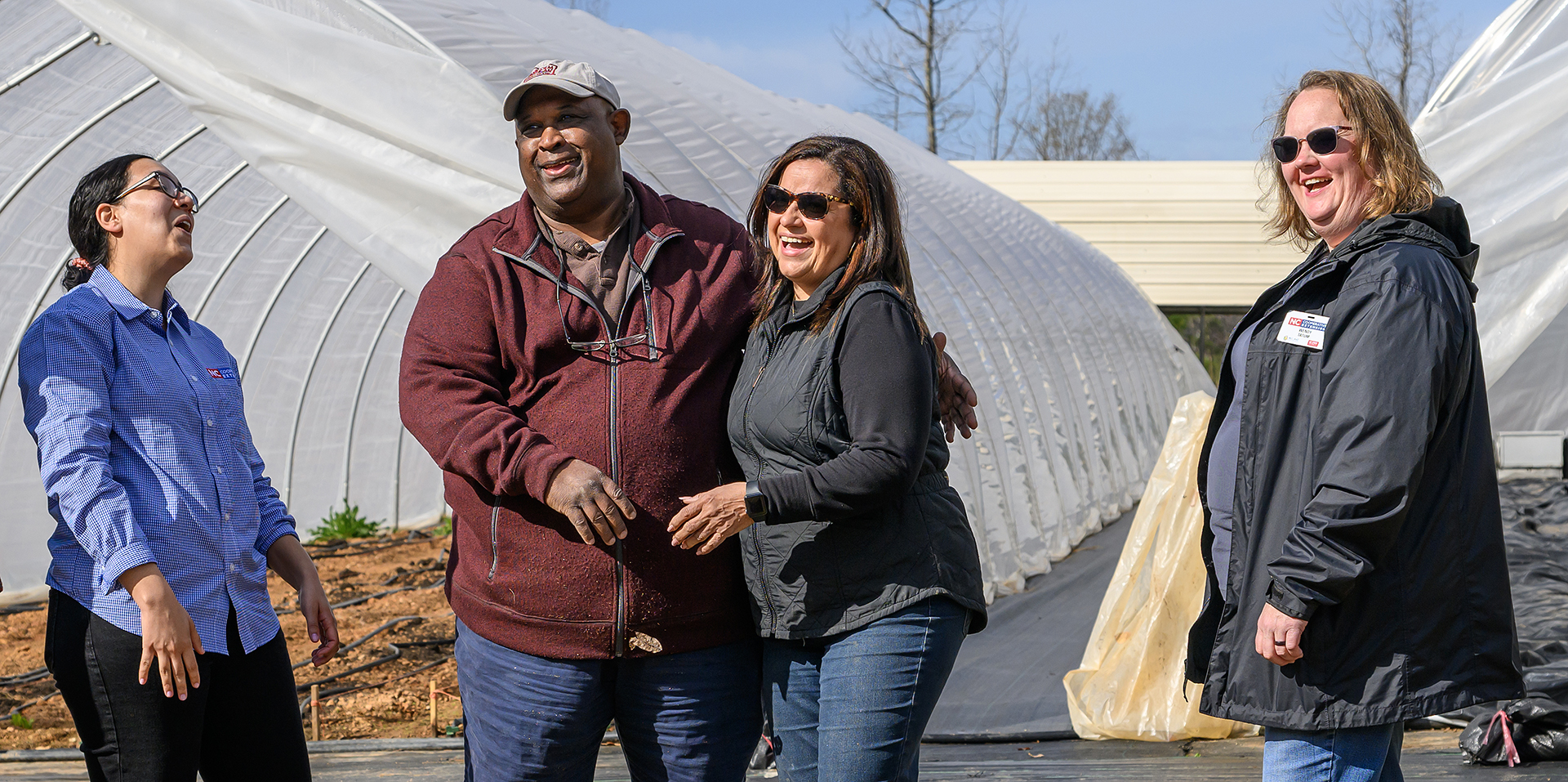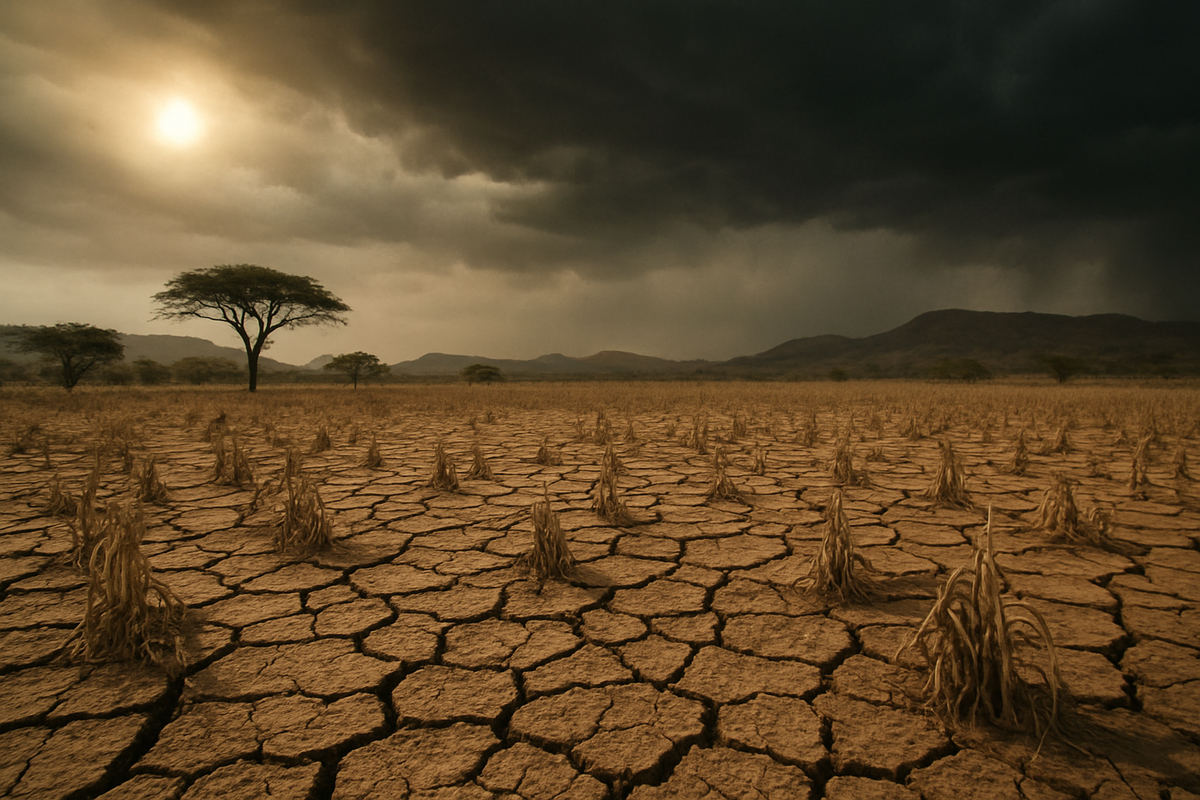Agricultural Products In Mexico: 2025 Innovations – Farmonaut

Report on the State of Mexican Agriculture in 2025: Alignment with Sustainable Development Goals
Executive Summary
This report provides a comprehensive analysis of Mexico’s agricultural sector in 2025, evaluating its key products, technological innovations, and sustainability practices through the lens of the United Nations Sustainable Development Goals (SDGs). The sector is identified as a critical driver for the national economy and a pivotal contributor to achieving multiple SDGs, including SDG 2 (Zero Hunger), SDG 8 (Decent Work and Economic Growth), and SDG 13 (Climate Action). Projections indicate agricultural exports will exceed $45 billion, supported by a strategic integration of advanced technology and sustainable methodologies aimed at enhancing productivity, ensuring food security, and promoting environmental stewardship.
Introduction: Mexico’s Agricultural Sector and the 2030 Agenda
In 2025, Mexico’s agricultural landscape is characterized by its significant diversity, which underpins the nation’s food security and its status as a leading global exporter. The sector’s evolution is increasingly aligned with the 2030 Agenda for Sustainable Development, with a pronounced focus on balancing economic growth with environmental and social responsibility. Advancements in agricultural technology and a commitment to sustainable practices are reshaping production, directly contributing to goals related to poverty reduction (SDG 1), responsible consumption and production (SDG 12), and the protection of terrestrial ecosystems (SDG 15).
Analysis of Key Agricultural Products and SDG Contributions
The diverse climate and geography of Mexico facilitate the cultivation of a wide array of crops, each contributing uniquely to national and global sustainability objectives.
Staple and Specialty Crops: Foundations for Economic and Social Goals
- Maize (Corn): As the cornerstone of national food systems, maize production is central to achieving SDG 2 (Zero Hunger). Innovations in drought-tolerant seeds are enhancing climate resilience.
- Avocados: A primary export commodity, the avocado sector drives economic growth and employment, supporting SDG 8 (Decent Work and Economic Growth). Sustainable certification programs are increasingly adopted to protect biodiversity, aligning with SDG 15 (Life on Land).
- Tomatoes: High-tech greenhouse cultivation and integrated pest management reduce chemical use and water consumption, contributing to SDG 12 (Responsible Consumption and Production) and SDG 6 (Clean Water and Sanitation).
- Berries: This rapidly growing export sector leverages controlled-environment agriculture to ensure high yields and quality, boosting rural economies in line with SDG 1 (No Poverty).
- Coffee: The adoption of shade-grown and organic farming methods in coffee production supports biodiversity and ecosystem health, directly addressing SDG 15 (Life on Land).
- Sugarcane and Citrus: These traditional sectors are modernizing with precision agriculture to optimize resource use, contributing to sustainable industrial practices under SDG 9 (Industry, Innovation, and Infrastructure).
Technological Innovation for Sustainable Development
The integration of technology is fundamental to modernizing Mexican agriculture and accelerating progress toward the SDGs.
Agri-Tech as a Catalyst for SDG 9
Technological advancements are transforming the sector into a model of modern, sustainable industry, in line with SDG 9 (Industry, Innovation, and Infrastructure).
- Satellite Imaging & Remote Sensing: Provides critical data for monitoring crop health, optimizing water and fertilizer application, and improving land management.
- IoT Sensors & Automation: Enable precision irrigation and nutrient delivery, minimizing waste and environmental impact.
- AI & Machine Learning: Support predictive analytics for pest outbreaks and yield forecasting, enhancing resource efficiency and productivity.
- Blockchain Traceability: Increases transparency in supply chains, ensuring food safety and promoting fair trade practices, which supports SDG 12 (Responsible Consumption and Production).
Sustainable Farming Practices and Environmental Stewardship
A transition toward sustainable and regenerative practices is underway to ensure the long-term viability of the agricultural sector and protect natural resources.
Climate Action and Resilience (SDG 13)
Mexican agriculture is actively adopting practices to mitigate and adapt to climate change.
- Regenerative Agriculture: Practices such as minimal tillage and cover cropping are being implemented to rebuild soil health, enhance biodiversity, and sequester carbon.
- Carbon Footprint Monitoring: Tools are being deployed to measure and reduce greenhouse gas emissions from farming operations, aligning the sector with national climate targets.
Protecting Water and Land Resources (SDG 6 & SDG 15)
- Water Conservation: The use of drip irrigation, rainwater harvesting, and other water-efficient technologies is critical in addressing water scarcity, a key target of SDG 6.
- Agroforestry: Integrating trees into farming systems, particularly for coffee and avocado crops, helps preserve biodiversity, prevent soil erosion, and support SDG 15.
- Organic Farming: The expansion of organic production reduces reliance on synthetic inputs, protecting soil and water quality.
Socio-Economic Impact and Contribution to Global Goals
The agricultural sector is a vital pillar of Mexico’s economy and social fabric, contributing directly to several key SDGs.
Economic Growth and Rural Livelihoods (SDG 1 & SDG 8)
- Economic Contribution: The sector contributes approximately 3-4% to the national GDP and generates over $45 billion in export revenue, fostering economic growth.
- Rural Employment: Agriculture provides livelihoods for millions of rural inhabitants, playing a crucial role in poverty reduction (SDG 1) and providing decent work (SDG 8).
Food Security and Social Equity (SDG 2 & SDG 5)
- Food Sovereignty: The sector ensures a stable supply of staple foods, which is fundamental to national food security (SDG 2).
- Inclusivity: There is a growing emphasis on programs that encourage the participation of women and youth in agri-business and technology, promoting gender equality (SDG 5).
Challenges and Strategic Outlook
Key Sectoral Challenges
Despite progress, the sector faces significant challenges that could impede the achievement of the SDGs.
- Water Scarcity: Intensifying droughts linked to climate change threaten production and require urgent action on water management (SDG 6, SDG 13).
- Land Degradation: Soil erosion and loss of fertility from intensive farming practices pose a risk to long-term productivity (SDG 15).
- Market Volatility: Fluctuations in global commodity prices create economic instability for farmers.
- Labor Shortages: Migration from rural to urban areas presents a challenge to the agricultural workforce.
Forward Outlook: A Resilient and Sustainable Future
The outlook for Mexican agriculture remains positive. Continued investment in technology, infrastructure, and sustainable practices will enhance the sector’s resilience. By leveraging innovation to improve resource efficiency, adapt to climate change, and ensure supply chain transparency, Mexico is well-positioned to strengthen its agricultural leadership while making significant contributions to the global Sustainable Development Goals.
Appendix: Frequently Asked Questions
-
What are the most significant agricultural products in Mexico in 2025 in relation to the SDGs?
The leading products are maize (SDG 2), avocados (SDG 8, SDG 15), tomatoes (SDG 12), berries (SDG 1), and coffee (SDG 15). Each plays a distinct role in advancing economic, social, and environmental goals.
-
How is technology advancing sustainable agriculture in Mexico?
Technologies such as satellite monitoring, AI analytics, and IoT sensors are enabling precision agriculture. This boosts productivity while minimizing resource use, directly supporting SDGs 9, 12, and 13.
-
What are the primary export markets for Mexican agricultural goods?
The United States is the largest market, followed by Europe and Japan. Strong export performance contributes significantly to SDG 8 (Decent Work and Economic Growth).
-
Which sustainability practices are becoming widespread?
Key practices include organic farming, water-efficient irrigation, agroforestry, and regenerative agriculture. These methods are crucial for achieving SDG 6 (Clean Water), SDG 13 (Climate Action), and SDG 15 (Life on Land).
-
What are the main challenges to the sector’s sustainability?
Primary challenges include climate change-induced water scarcity, soil degradation, and market volatility, which pose risks to achieving long-term sustainability and food security goals.
Analysis of Sustainable Development Goals in Mexico’s Agricultural Landscape
1. Which SDGs are addressed or connected to the issues highlighted in the article?
-
SDG 2: Zero Hunger
The article directly addresses food security and food sovereignty in Mexico. It highlights the importance of staple crops like maize as the “cornerstone of Mexican agriculture” and essential for the “national diet.” The focus on increasing crop production and ensuring stable yields contributes to achieving food security.
-
SDG 6: Clean Water and Sanitation
The article emphasizes the challenge of “Water Scarcity” due to climate change. It discusses numerous solutions being adopted, such as “Water-use efficiency,” “drip irrigation,” “water conservation,” “rainwater harvesting,” and “water recirculation,” all of which are central to the sustainable management of water resources.
-
SDG 8: Decent Work and Economic Growth
The economic impact of agriculture is a key theme. The article states that the sector contributes 3-4% of the national GDP, generates over $45 billion in export earnings, and supports the livelihoods of “over 30 million rural inhabitants.” The adoption of technology to drive “quality improvements” and productivity also aligns with this goal.
-
SDG 9: Industry, Innovation, and Infrastructure
A significant portion of the article is dedicated to technological transformation in agriculture. It details the use of “advanced agri-tech,” “precision farming,” “Satellite Imaging & Remote Sensing,” “IoT Sensors & Automation,” and “AI & Machine Learning Analytics” to modernize the sector and improve productivity and sustainability.
-
SDG 12: Responsible Consumption and Production
The article is replete with references to sustainable production patterns. It mentions “sustainable certification programs” (Fair Trade, Rainforest Alliance), “organic farming,” “reduced pesticide use,” “minimizing waste and environmental impact,” and “blockchain traceability” to ensure product authenticity and transparency for consumers.
-
SDG 13: Climate Action
The article addresses both the impacts of and responses to climate change. It notes challenges like “intensifying droughts” and “shifting climate conditions.” In response, it highlights the adoption of “climate-resilient farming methods,” “drought-tolerant seeds,” “carbon footprint monitoring,” and “regenerative agriculture” to promote “climate resilience.”
-
SDG 15: Life on Land
The protection and restoration of terrestrial ecosystems are discussed through various practices. The article mentions combating “Land Degradation” and “soil erosion” through “soil health monitoring,” “soil restoration,” and “regenerative agriculture.” It also highlights practices like “agroforestry,” “biodiversity conservation,” and creating “pollinator habitats” to preserve ecosystems.
2. What specific targets under those SDGs can be identified based on the article’s content?
-
Target 2.4: Sustainable food production and resilient agricultural practices
The article’s central theme is the implementation of sustainable and resilient agricultural practices. It explicitly mentions Mexico’s aim to “increase sustainable crop production” and details the adoption of “drought-resistant seed varieties,” “climate-resilient farming methods,” and regenerative agriculture to ensure stable yields “in the face of climate change and water scarcity.”
-
Target 6.4: Increase water-use efficiency
The article directly addresses this target by highlighting the widespread adoption of technologies and practices aimed at conserving water. Mentions of “drip irrigation,” “water-use efficiency,” “water optimization,” and “water recirculation” in arid and semi-arid regions clearly align with the goal of increasing efficiency across the agricultural sector.
-
Target 8.2: Achieve higher levels of economic productivity through technological upgrading and innovation
The article connects technological innovation directly to economic growth. It states that “agricultural exports are projected to exceed $45 billion in 2025, driven by technology-driven quality improvements.” The detailed list of innovations, from AI and satellite monitoring to blockchain, illustrates the focus on upgrading the sector to boost productivity and value.
-
Target 9.5: Enhance scientific research and upgrade technological capabilities
The article describes a “rapidly growing agricultural technology ecosystem” in Mexico. The implementation of “Satellite Imaging & Remote Sensing,” “AI & Machine Learning Analytics,” and “IoT Sensors” demonstrates a clear effort to upgrade the technological capabilities of the agricultural sector to support innovation and productivity.
-
Target 12.2: Sustainable management and efficient use of natural resources
This target is reflected in the article’s focus on resource efficiency. Practices like “precision fertilizer application,” “integrated pest management (IPM)” to reduce chemical inputs, and IoT sensors to “minimize waste and environmental impact” are all examples of achieving sustainable management and efficient use of natural resources like soil, water, and agrochemicals.
-
Target 13.1: Strengthen resilience and adaptive capacity to climate-related hazards
The article details how the Mexican agricultural sector is adapting to climate-related hazards. The adoption of “drought-tolerant seeds,” “resilient crop varieties for climate adaptation,” and the use of “satellite climate analysis” are direct measures to strengthen resilience against challenges like droughts and climate variability mentioned in the text.
-
Target 15.3: Combat desertification and restore degraded land and soil
The challenge of “Land Degradation” and “soil erosion” is mentioned, along with solutions. The article highlights the rise of “regenerative agriculture” practices designed to “rebuild degraded soils” and “enhance biodiversity.” Practices like “soil restoration” and “agroforestry” to “improve soil quality” directly contribute to this target.
3. Are there any indicators mentioned or implied in the article that can be used to measure progress towards the identified targets?
-
Indicator for Target 2.4 (Agricultural Productivity):
The article provides a specific, measurable indicator: “By 2025, Mexico aims to increase sustainable crop production by 18%.” This percentage increase serves as a direct measure of progress in agricultural productivity and production.
-
Indicator for Target 8.2 (Economic Value):
A clear economic indicator is provided with the projection that “Mexico’s agricultural exports are projected to exceed $45 billion in 2025.” This monetary value can be used to track the economic productivity and growth of the sector.
-
Implied Indicator for Target 6.4 and 12.2 (Resource Efficiency):
While no single number is given, the article implies that the *adoption rate* of resource-efficient technologies is a key indicator. Progress could be measured by tracking the percentage of farms using “drip irrigation,” “precision agriculture,” “smart irrigation,” and “water-use efficiency” techniques.
-
Implied Indicator for Target 13.1 and 15.3 (Resilience and Land Restoration):
Progress towards these targets is implied through the adoption of specific practices. An indicator would be the *area of land* under “climate-resilient farming methods,” “agroforestry,” “regenerative agriculture,” and “organic farming.” The mention of “Carbon footprint monitoring” also implies the use of greenhouse gas emission measurements as an indicator for climate action.
4. Table of SDGs, Targets, and Indicators
| SDGs | Targets | Indicators |
|---|---|---|
| SDG 2: Zero Hunger | 2.4: Ensure sustainable food production systems and implement resilient agricultural practices that increase productivity. | Increase in sustainable crop production by 18% by 2025. |
| SDG 6: Clean Water and Sanitation | 6.4: Substantially increase water-use efficiency across all sectors. | Implied: Adoption rate of water conservation technologies like drip irrigation and precision water application. |
| SDG 8: Decent Work and Economic Growth | 8.2: Achieve higher levels of economic productivity through technological upgrading and innovation. | Agricultural export revenue projected to exceed $45 billion in 2025. |
| SDG 9: Industry, Innovation, and Infrastructure | 9.5: Enhance scientific research, upgrade the technological capabilities of industrial sectors. | Implied: Widespread adoption of agri-tech, including satellite monitoring, AI, IoT, and blockchain in the agricultural sector. |
| SDG 12: Responsible Consumption and Production | 12.2: Achieve the sustainable management and efficient use of natural resources. | Implied: Adoption rate of organic farming, reduced pesticide use, and sustainable certification programs (e.g., Fair Trade, Rainforest Alliance). |
| SDG 13: Climate Action | 13.1: Strengthen resilience and adaptive capacity to climate-related hazards. | Implied: Area of farmland utilizing climate-resilient varieties and practices; use of carbon footprint monitoring tools. |
| SDG 15: Life on Land | 15.3: Combat desertification, restore degraded land and soil. | Implied: Area of land under regenerative agriculture, agroforestry, and soil restoration practices. |
Source: farmonaut.com

What is Your Reaction?
 Like
0
Like
0
 Dislike
0
Dislike
0
 Love
0
Love
0
 Funny
0
Funny
0
 Angry
0
Angry
0
 Sad
0
Sad
0
 Wow
0
Wow
0




















































.jpg.webp?itok=0ZsAnae9#)


























